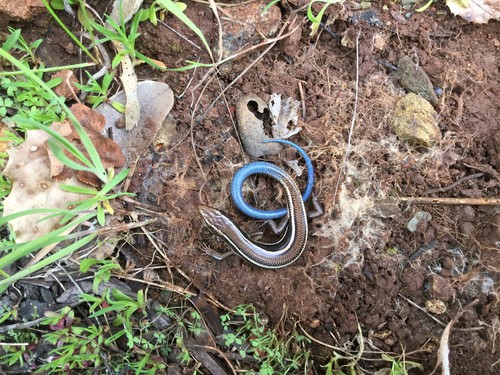Sharing Community & Citizen Science with Local Educators
In February, we teamed up with Pepperwood Preserve and Sonoma County K-5th grade educators to run a workshop on how to facilitate community and citizen science in the classroom. Activities included observational sketching, a mini bioblitz, and sharing the YCCS Environmental Science Agency framework. Educators left eager and equip to try out new projects in creative ways with their students.
Strong partnerships at Pepperwood Preserve
Our team kicked off the first of two teacher professional development workshops at Pepperwood Preserve. Nestled amidst the rolling hills and oak woodlands of Sonoma County, Pepperwood is a nature preserve and living laboratory for scientists, teachers, and students alike to learn about conservation through research and environmental education. Because the preserve engages so much of the wider community, our workshop filled quickly with teachers and administrators, many of whom had participated in Pepperwood programs before. This goes to show just how valuable professional partnerships can be! Not only were we able to share our research with an interested educator audience, the participants themselves were keen on returning to Pepperwood and learn more about new preserve partnerships.
The more you look, the more you see
At the start of the workshop, educators were asked to raise a hand if they had previously heard about citizen science. Approximately a quarter of the 30 educators in attendance raised their hands. However, when asked about their familiarity with Next Generation Science Standards (NGSS)–the new science education reform, nearly everyone raised a hand. The science practices of the NGSS can be met through a citizen science approach. Therefore, illustrating the connections between these two areas was the first emphasis of the workshop.
In groups, educators were both bemused and contemplative by practicing their observation skills through a series of interactive and reflective sketching exercises. Channeling attention to detailed drawing led to novel observations of redwood twigs and other biological artifacts scattered across the tables. The educators were enthusiastic about participating in an activity they could imagine their own students enjoying and benefiting from as well. And as they completed the “I notice, I wonder” journal activity to compliment their sketches, some educators were already brainstorming ways they could use sketching activities with students to practice generating questions and making scientific observations.
In discussing what made a “good” sketch, educators identified aspects of their drawings such as attention to detail and accurate scale to name a few. These conversations helped frame thinking about scientific data collection and positioning students as people who do authentic science. What makes scientific data “good”? How can students collect data like a scientist? To get hands-on experience with this, educators explored Pepperwood Preserve’s native plant garden–making careful observations of plant and animal species like they had done while sketching. This time, they captured these observations via iPad cameras and submitted their photo data to Pepperwood’s Vital Signs biodiversity project via iNaturalist. 22 observations were added to the Vital Signs project during the workshop, seven of which became ‘research grade’ species observations of plants, insects, reptiles, and amphibians–including documentation of a western skink (Plestiodon skiltonianus) and a gray looper moth (Rachiplusia ou).
Bringing new ideas into and outside of the classroom
Youth-focused community and citizen science is about creating authentic experiences for students to hone scientific inquiry skills while making contributions to real-world projects with results that go beyond the classroom. Through our research, we have identified key practices both for teachers and for students to help enforce a process we identify as Environmental Science Agency (ESA). Educators can support their students with ESA practices in several ways through citizen science. This workshop was the first of many opportunities our team will facilitate for educators interested in participating in these types of projects that can be done inside (or outside) the classroom but carry impacts that go well beyond its walls.
As the workshop wrapped up, a group of teachers from an elementary school brainstormed how they could team up 5th and 1st graders to work together on a pollinator monitoring project in their school garden. Another pair of teachers discussed how they might address an ongoing environmental issue at their school, the flooding of their riverside playground through a citizen science approach. This is exactly the kind of problem-solving, collaboration, and authentic application we believe community and citizen science can play an important role in fostering. When students are inspired to observe, form questions, and create solutions to the everyday world around them, they have an opportunity to contribute to scientific problems that don’t end when the school bell rings. This group of educators were eager and up to the challenge of creating these experiences for their students. One of our goals through the YCCS project is to offer tools and support to educators that help them integrate projects and make these projects successful learning opportunities for young people. This workshop was just one of many future steps towards that goal.
If you are an educator who would like to learn more about how you can participate in a future YCCS workshop, please contact us at ccs.ucdavis.edu. If you previously attended one of our workshops and have since implemented new lessons or projects in your class or at your school, we would love to hear about those experiences as well!










